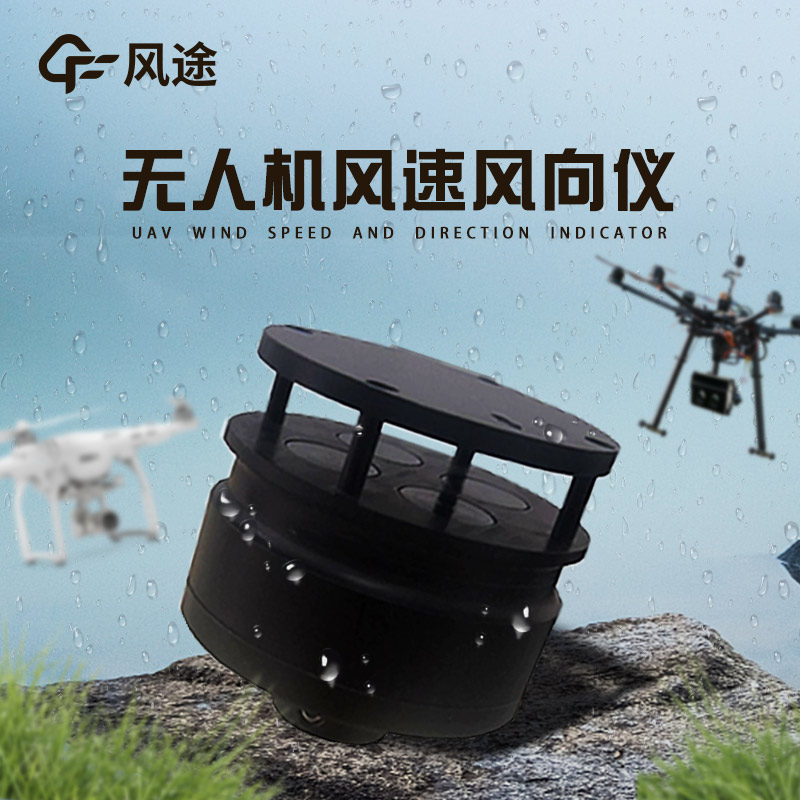Shandong Fengtu IOT Technology Co., Ltd
Sales Manager:Ms. Emily Wang
Cel,Whatsapp,Wechat:+86 15898932201
Email:info@fengtutec.com
Add:No. 155 Optoelectronic Industry Accelerator, Gaoxin District, Weifang, Shandong, China

Sales Manager:Ms. Emily Wang
Cel,Whatsapp,Wechat:+86 15898932201
Email:info@fengtutec.com
Add:No. 155 Optoelectronic Industry Accelerator, Gaoxin District, Weifang, Shandong, China
time:2024-01-19 17:23:58 source:Weather Station viewed:677 time
Wind speed monitoring is a critical task during UAV flight. It not only helps the flight control system to develop a flight plan and adjust it in real time, but also provides critical environmental data to ensure flight safety. However, UAV wind speed and direction monitoring faces several challenges.
First, the size and weight of UAVs limit the choice of available wind speed and direction monitoring equipment. Traditional wind speed measurement instruments tend to be bulky and heavy, which is impractical for UAVs. Therefore, lightweight and miniaturised sensors are needed to accommodate the specific needs of UAVs.
Second, UAVs are affected by air currents during flight, which can lead to sudden changes in wind speed and direction. Therefore, the sensor needs to have a fast response capability to accurately capture and feed back these changes.
Third, the endurance and load limitations of the UAV are also issues to consider. Monitoring wind speed and direction over a long period of time may have an impact on the UAV's range, so low-power sensors need to be selected to ensure that the UAV is able to perform longer missions.
The Wind Speed and Direction Meter for UAVs is a high-precision wind speed monitoring device designed specifically for UAVs. This instrument uses the ultrasonic resonance principle to accurately measure wind speed and direction in low altitude areas. With a weight of only 56g and a diameter of 46mm, this wind speed and direction meter is one of the lightweight and small-sized ultrasonic anemometers on the market. Its compact design makes it ideal for mounting on small aerial vehicles and unmanned platforms. In addition, the sensor is extremely anti-electromagnetic interference, waterproof and dustproof, and is able to work normally at high altitudes up to 4,000 metres above sea level. With an operating temperature range of -40°C to +70°C, it can adapt to a variety of external environmental conditions.

As a new type of radar level meter, frequency modulation radar level meter has increased the frequency modulation function compared with general radar level meter, and is currently more used in the market. Suitable for environments in pools, tanks and other occasions.Principle of frequency modulatio...
The Air Quality Monitoring Station plays a crucial role in environmental supervision.The Air Quality Monitoring Station can monitor the concentrations of various pollutants and meteorological parameters in the air, such as PM2.5, PM10, SO₂, NO₂, CO, O₃, TVOC, etc., in real-time and continuously,...
The GNSS Monitoring Station can detect potential dangers in a timely manner by monitoring mountain displacements with high precision. It can collect the three-dimensional coordinates of monitoring points on the mountain surface in real time, with an accuracy reaching the centimeter or even millimete...
Explosion-proof automatic weather station, mainly used for environmental monitoring and management in electric power, petroleum, chemical and other industries, is a meteorological observation instrument. It can monitor the changes of various meteorological data in the atmosphere exactly within a cer...